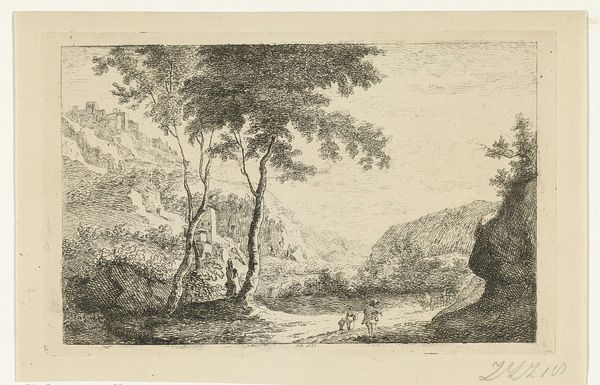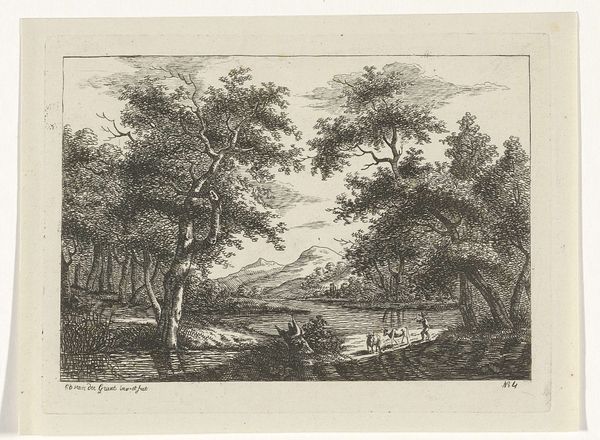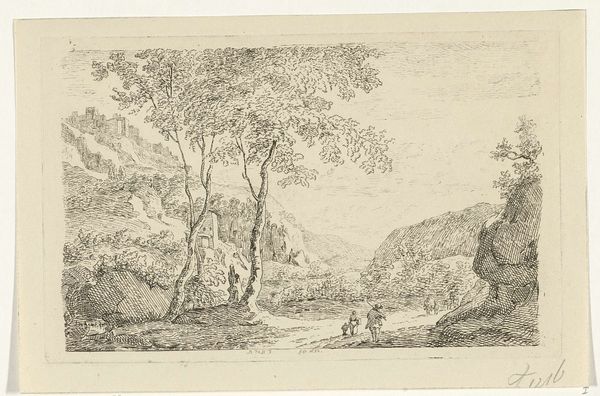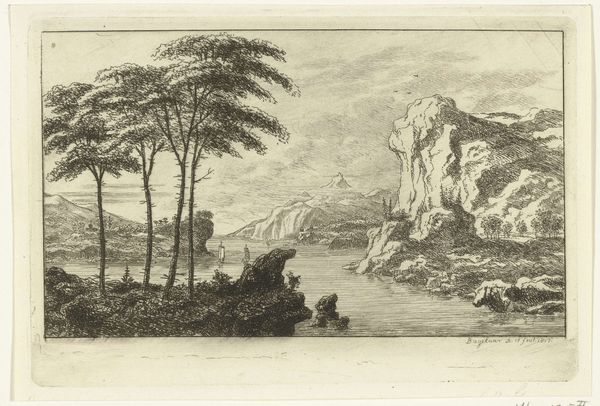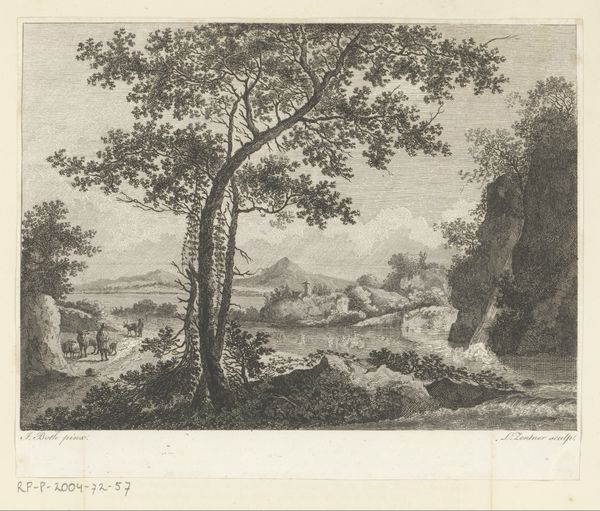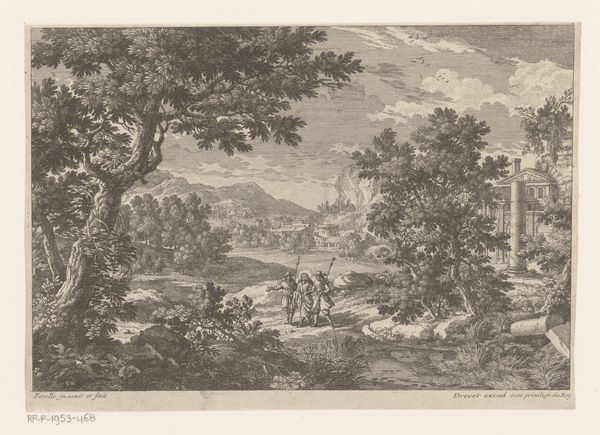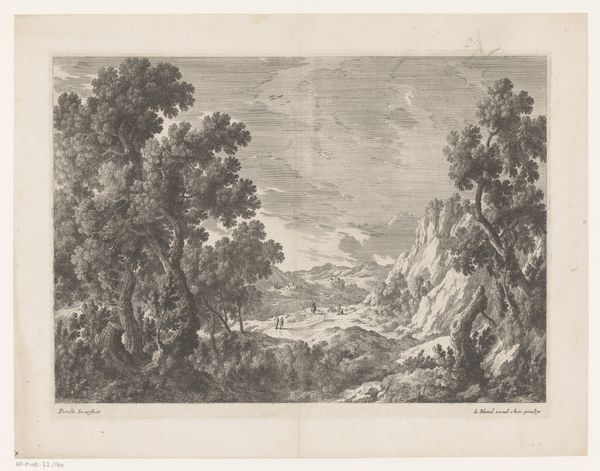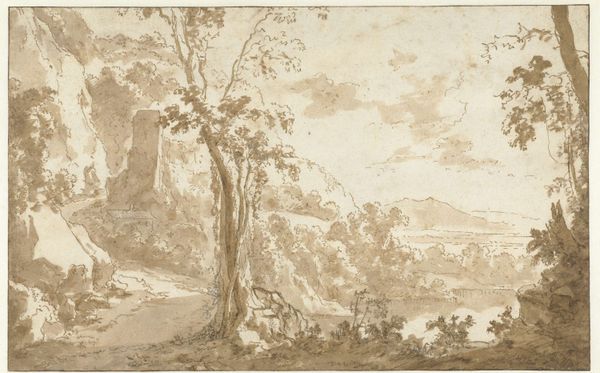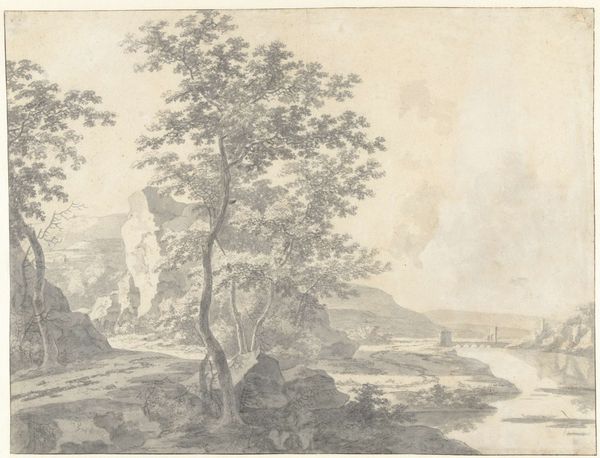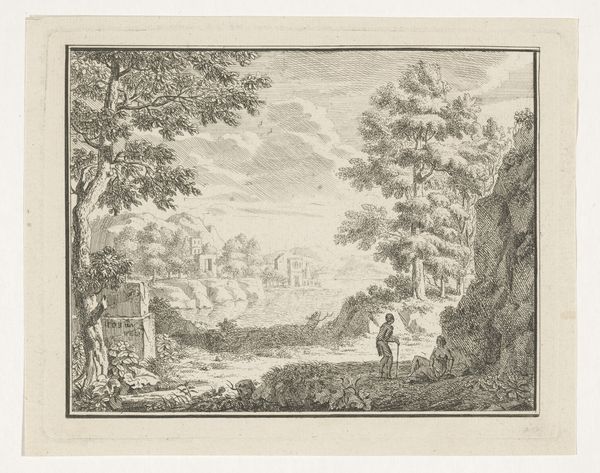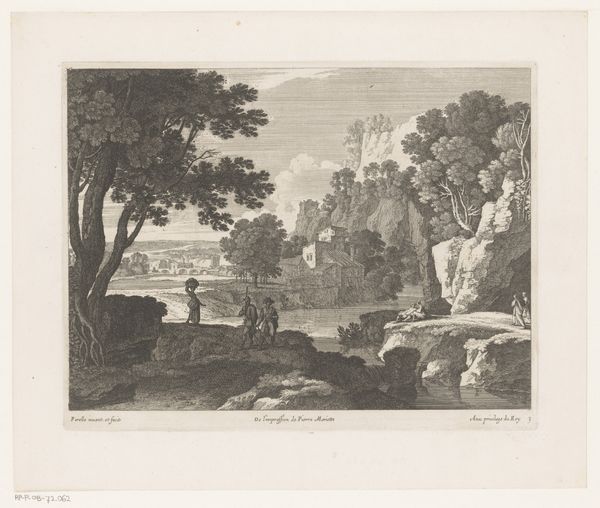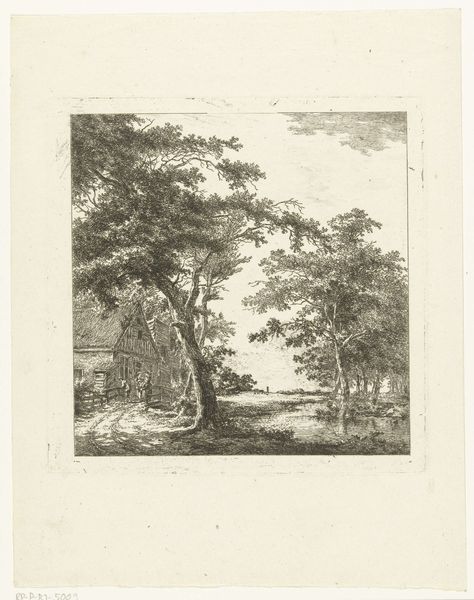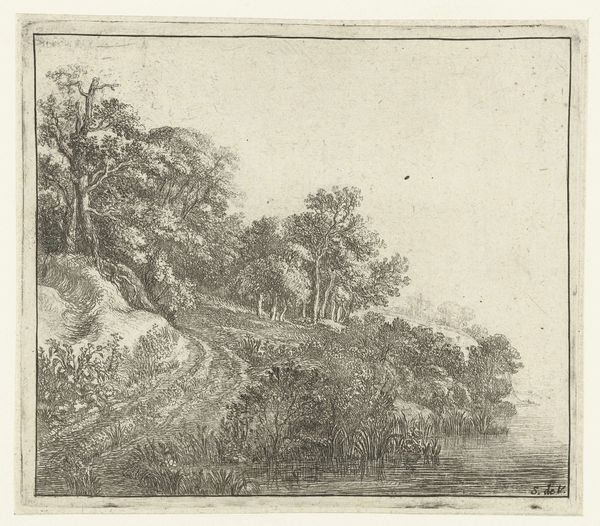
drawing, print, etching, paper
#
drawing
# print
#
etching
#
landscape
#
paper
#
romanticism
Dimensions: 132 × 181 mm (image); 152 × 196 mm (plate); 208 × 278 mm (sheet)
Copyright: Public Domain
Curator: Albert Christoph Dies' 1794 etching, "Lake Nemi," captures a classic Romantic landscape. Editor: It’s a really lovely composition. The texture created by the etching makes me think of a hazy summer day; the scene is tranquil. Curator: Look at the placement of figures within the natural elements—the trees, the rocks, and the ruin atop the distant cliffside. Dies skillfully positions these within the landscape, each carrying distinct associations of nature, protection, and the passage of time. The people gathered on the shore seem almost secondary to the looming symbolism of the landscape itself. Editor: Absolutely, but it's how those textures are achieved that fascinates me. It's clear that this landscape isn't just 'found,' but deliberately *made*. How was Dies' practice influenced by the increasing availability and demand for prints during this period? What type of paper was used and sourced from, and how accessible were etching tools? This impacts how we see the value, circulation, and even the artistic intention behind this specific image. Curator: I agree that it speaks to access, but consider the idealized form. It isn’t simply documentation. Lake Nemi and similar landscapes from this period evoke a very specific feeling—a sense of sublime awe in the face of nature's power, tinged with a wistful melancholy. Editor: Of course, it’s idealized. But that ideal also reflects the means available to reproduce the image—how quickly, how cheaply. Knowing those parameters re-grounds my viewing experience. For me, understanding those material factors gives us a fuller sense of its cultural value. Curator: And understanding the cultural context, the artistic and literary movements of the time, helps us unlock its symbolic richness. These elements worked together to create meaning that resonates through centuries. Editor: Precisely, it’s a confluence, one that only strengthens by including the labor and materiality involved in the making. It all connects, the symbols, the methods, and the hands behind the process. It alters how one engages with the work itself. Curator: An apt synthesis to carry with you as we move onward.
Comments
No comments
Be the first to comment and join the conversation on the ultimate creative platform.
